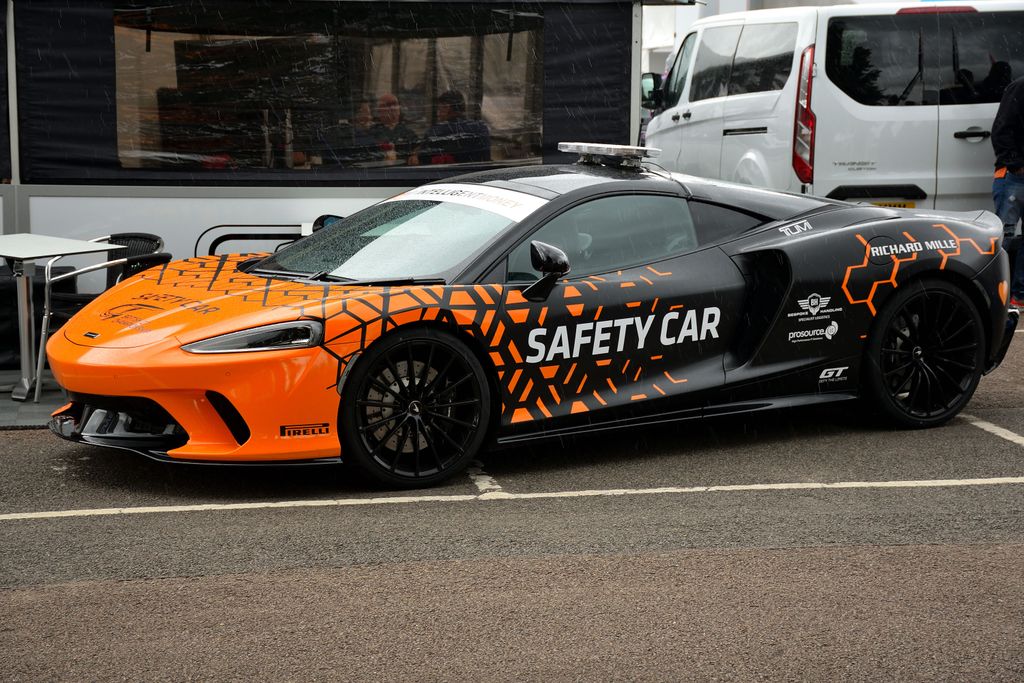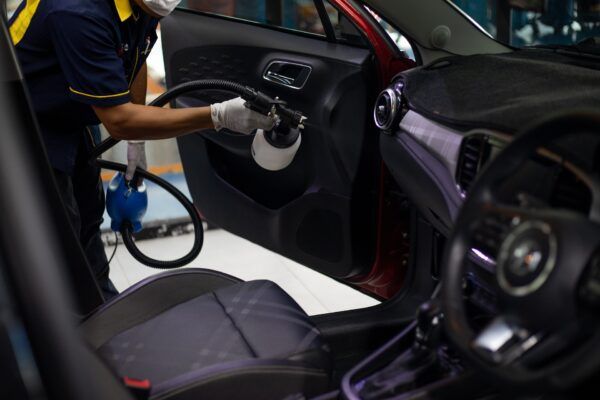
The automotive world is a fascinating, often infuriating, landscape where metal, rubber, and human ego collide. We’ve all been there: cruising along, minding our own business, when suddenly, a car appears in the rearview mirror, instantly triggering a sigh, an eye-roll, or even a pre-emptive prayer. It’s not always the car itself that’s the problem; sometimes, it’s the indelible mark left by the legions of drivers who have, shall we say, “exercised their right to operate a motor vehicle” with a certain… panache. Or lack thereof.
Today, we’re not just talking about bad cars, but the vehicles that have become unfortunate symbols of bad *driving*. These are the rides that, through a potent mix of viral videos, social media memes, and countless real-world encounters, have earned a reputation so strong it precedes them. When you spot one of these on the road, it’s less about the engineering prowess and more about bracing for the inevitable tailgating, sudden lane change, or inexplicable braking.
Join us as we dive deep into the fascinating (and sometimes frustrating) intersection of car culture and driver behavior, exploring the vehicles that have become poster children for everything from aggressive road rage to painfully slow commutes. We’ll peel back the layers of stereotype, fact, and pure automotive folklore to understand why certain models consistently get a bad rap, not for their mechanics, but for the humans behind their wheels. It’s time to talk about the real culprits – or at least, the cars they choose to pilot.
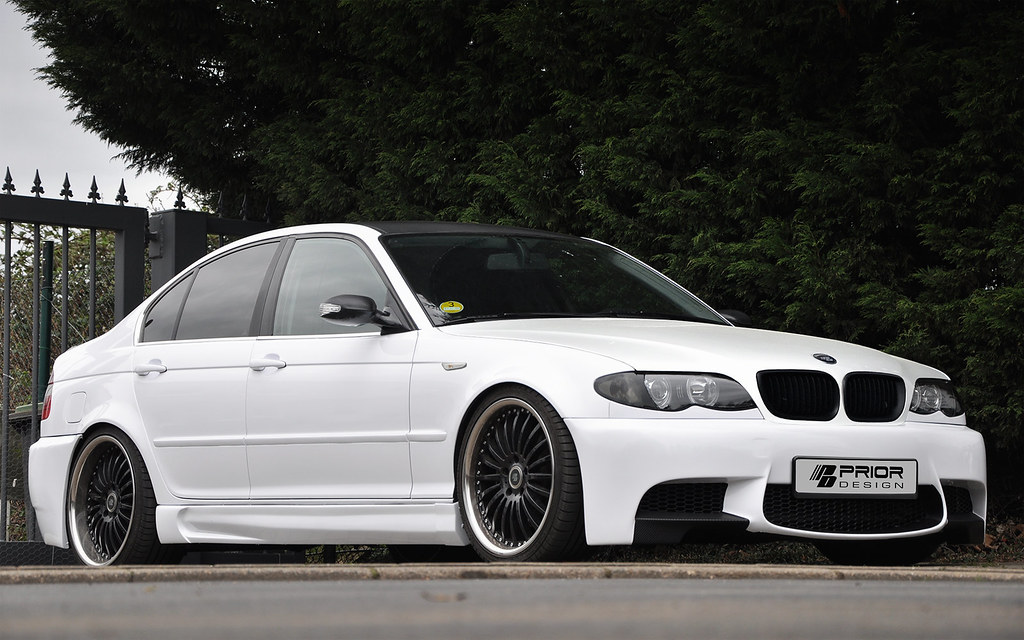
1. BMW 3 Series
The BMW 3 Series. Ah, the quintessential “Ultimate Driving Machine,” often piloted by those who seem to believe “ultimate” translates directly to “no speed limit, no turn signal required.” For decades, this German engineering marvel has been a performance benchmark, a sleek symbol of status and driving enjoyment. Yet, its shadow is perpetually cast by a stereotype that paints its drivers as impatient, aggressive, and utterly convinced that the rules of the road are merely suggestions for lesser mortals.
You see a 3 Series approach, and your mind instantly conjures images of rapid lane changes, a blinker that mysteriously remains dormant, and an exhaust note that screams, “Get out of my way!” While the car itself is built for exhilarating performance and precise handling, its drivers are frequently blamed for pushing those limits on public roads, treating every commute like a qualifying lap at the Nürburgring. This reputation isn’t just anecdotal; it’s woven into the fabric of car culture, fueling countless jokes about those mythical “BMW turn signals” that allegedly exist but are never actually used.
It’s an interesting dichotomy: a car designed for precision and driver engagement, often associated with driving that lacks both. Whether it’s the high-horsepower models or even the more sedate variants, the stigma persists, casting a long shadow over the brand. Love them or hate them, one thing is certain: a 3 Series driver rarely goes unnoticed, and often, it’s for reasons that make other motorists clutch their steering wheels a little tighter. It’s a luxury vehicle that, for many, represents a certain *type* of luxury: the luxury of acting like you own the road.
Car Model Information: 2023 Buick Envision Preferred
Name: BMW 3 Series
Manufacturer: BMW
Production: 1975–present
Class: Compact executive car
Predecessor: BMW 02 Series
Categories: 1970s cars, 1980s cars, 1990s cars, 2000s cars, 2010s cars
Summary: The BMW 3 series is a line of compact executive cars manufactured by the German automaker BMW since May 1975. It is the successor to the 02 series and has been produced in seven generations.
The first generation of the 3 Series was only available as a 2-door saloon; the model range expanded to include a 4-door saloon, 2-door convertible, 2-door coupé, 5-door estate, 5-door liftback (“Gran Turismo”; discontinued in 2019) and 3-door hatchback body styles. Since 2013, the coupé and convertible models have been marketed as the 4 Series; these styles no longer being included in the 3 Series.
The 3 Series is BMW’s best-selling model line, accounting for around 30% of the BMW brand’s annual total car sales, and has won numerous awards throughout its history. The M version of the 3 series, M3, debuted with the E30 M3 in 1986.
Get more information about: BMW 3 Series
Buying a high-performing used car >>>
Brand: BMW Model: 3 Series
Price: $20,221 Mileage: 46,554 mi.
Read more about: More Than Skin Deep: 14 Great-Looking Vintage and Iconic Cars Mechanics Couldn’t Stand Fixing
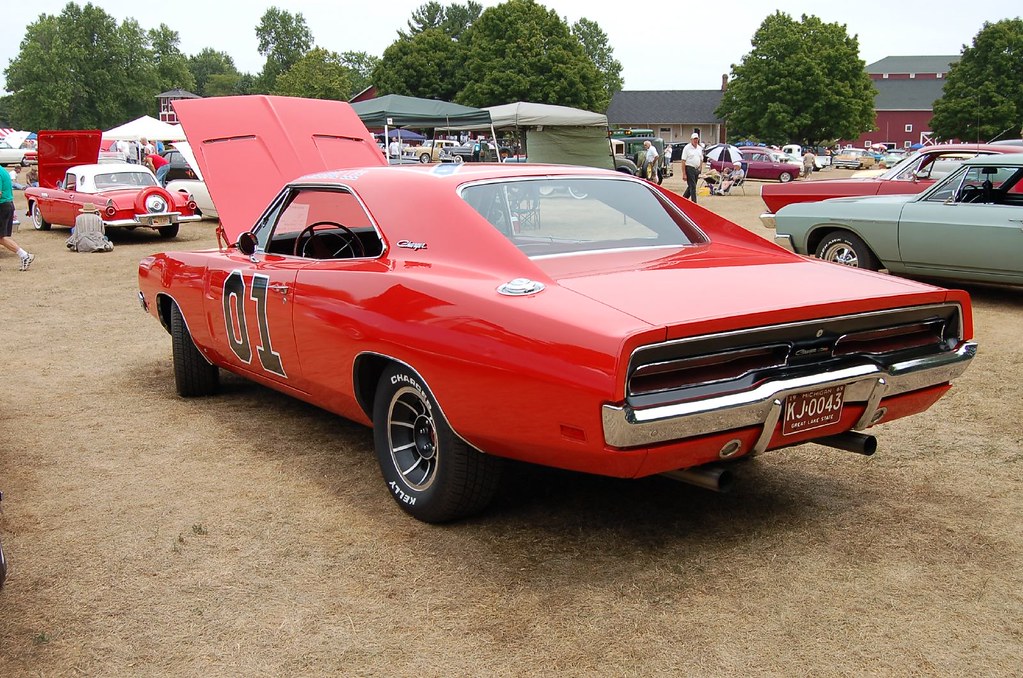
2. Dodge Charger
Next up, we have the Dodge Charger, a modern muscle car with an unmistakable presence and a reputation that roars almost as loudly as its HEMI engine. Charger drivers are infamous for their affinity for burning rubber, the scent of which often lingers long after they’ve blasted down the highway like it’s their personal drag strip. This isn’t just about speed; it’s about a particular brand of theatrical aggression, a need to announce one’s presence with a thunderous exhaust note and a cloud of tire smoke.
Many motorists associate this powerful sedan with reckless speeding and an inclination for street racing, a direct consequence of the immense horsepower lurking under its hood. It’s a car that attracts drivers eager to test the boundaries, both of the vehicle’s capabilities and, unfortunately, of road safety. This often translates into risky maneuvers, sudden accelerations, and a general disregard for the comfort and safety of other road users, much to the frustration of anyone sharing the tarmac.
The Charger, in its essence, offers a thrilling driving experience, a visceral connection to classic American muscle. However, its potential as a practical, albeit powerful, sedan is frequently overshadowed by the antics of a vocal (and often visible) minority. When a Charger appears in your rearview mirror, particularly one with aftermarket exhaust or a tell-tale rumble, you might find yourself anticipating a show, though not always one you’re keen to witness. It’s a performance car, and some drivers certainly take that literally, performing for an audience of unwilling participants.
Car Model Information: 2023 Dodge Charger SRT Hellcat Widebody Jailbreak
Name: Dodge Charger
Caption: 1969 Dodge Charger
Manufacturer: Dodge
Production: 1966–1978,1981–1987,2005–present
ModelYears: 1966–1978,1982–1987,2006–present
Categories: 1960s cars, 1970s cars, 1980s cars, 2000s cars, 2010s cars
Summary: The Dodge Charger is a model of automobile marketed by Dodge in various forms over eight generations since 1966.
The first Charger was a show car in 1964. A 1965 Charger II concept car resembled the 1966 production version.
In the United States, the Charger nameplate has been used on mid-size cars, personal luxury coupes, subcompact hatchbacks, and full-size sedans.
Get more information about: Dodge Charger
Buying a high-performing used car >>>
Brand: Dodge Model: Charger
Price: $94,975 Mileage: 4,260 mi.
Read more about: Unmasking the Automotive Paradox: 15 “Classic” Cars You’d Expect to Be Priceless But Are Actually Worth Almost Nothing
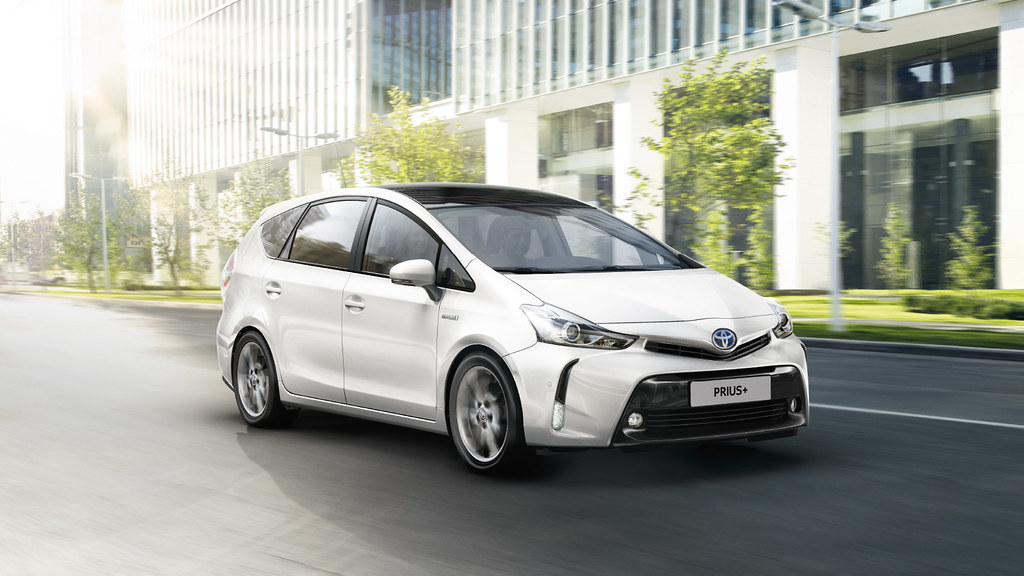
3. Toyota Prius
From tire-shredding muscle to silent, eco-conscious efficiency, we swing to the complete opposite end of the spectrum with the Toyota Prius. If the Charger is known for aggressive haste, the Prius is infamous for its slow, often hesitant, driving style, almost a rolling embodiment of extreme caution. It’s almost as if the hybrid’s eco-friendly appeal, its quiet hum of battery power, somehow translates into an overly cautious, almost apologetic, presence on the road, where every acceleration is a meditative process.
Many drivers harbor a particular frustration for Prius owners, complaining that they habitually clog up the fast lanes, accelerate with the urgency of a sloth, or brake unnecessarily, often seemingly out of nowhere. It’s not a car built for speed, nor does it pretend to be, but the stereotype suggests its drivers take that a little too far, prioritizing every last drop of fuel economy over the natural flow of traffic. This perception has cemented the Prius’s unfortunate role as the poster child for frustratingly slow commutes and unexpected road blockages, frequently leading to unnecessary congestion.
While the Prius undoubtedly excels in efficiency and reliability, offering a pragmatic and environmentally conscious choice, it has inadvertently become the face of dwindling patience on the road. The humor, and indeed the irritation, often stems from the perceived disconnect between the car’s advanced technology and the seemingly rudimentary driving habits of some of its owners. It may be a champion at saving gas, but for many, it certainly doesn’t save any patience in a queue of traffic, making rush hour feel even longer.
Car Model Information: 2023 Toyota Prius Prime XSE Premium
Name: Toyota Prius
Caption: Fifth generation Prius (XW60)
Manufacturer: Toyota
Production: December 1997 – present
ModelYears: 2001–present (US)
Class: ubl
BodyStyle: unbulleted list
Layout: unbulleted list
Sp: uk
Categories: 2000s cars, 2010s cars, 2020s cars, All-wheel-drive vehicles, All Wikipedia articles in need of updating
Summary: The Toyota Prius ( PREE-əss) (Japanese: トヨタ・プリウス, Hepburn: Toyota Puriusu) is a compact/small family liftback (supermini/subcompact sedan until 2003) produced by Toyota. The Prius has a hybrid drivetrain, which combines an internal combustion engine and an electric motor. Initially offered as a four-door sedan, it has been produced only as a five-door liftback since 2003.
The Prius was developed by Toyota to be the “car for the 21st century”; it was the first mass-produced hybrid vehicle, first going on sale in Japan in 1997 at all four Toyota Japan dealership chains, and subsequently introduced worldwide in 2000.
In 2011, Toyota expanded the Prius family to include the Prius v, an MPV, and the Prius c, a subcompact hatchback. The production version of the Prius plug-in hybrid was released in 2012. The second generation of the plug-in variant, the Prius Prime, was released in the U.S. in November 2016. The Prius family totaled global cumulative sales of 6.1 million units in January 2017, representing 61% of the 10 million hybrids sold worldwide by Toyota since 1997. Toyota sells the Prius in over 90 markets, with Japan and the United States being its largest markets.
Get more information about: Toyota Prius
Buying a high-performing used car >>>
Brand: Toyota Model: Prius
Price: $34,014 Mileage: 14,857 mi.
Read more about: Beyond Their Era: 14 Classic Cars That Revolutionized Automotive Design and Engineering, Then Faded From Memory
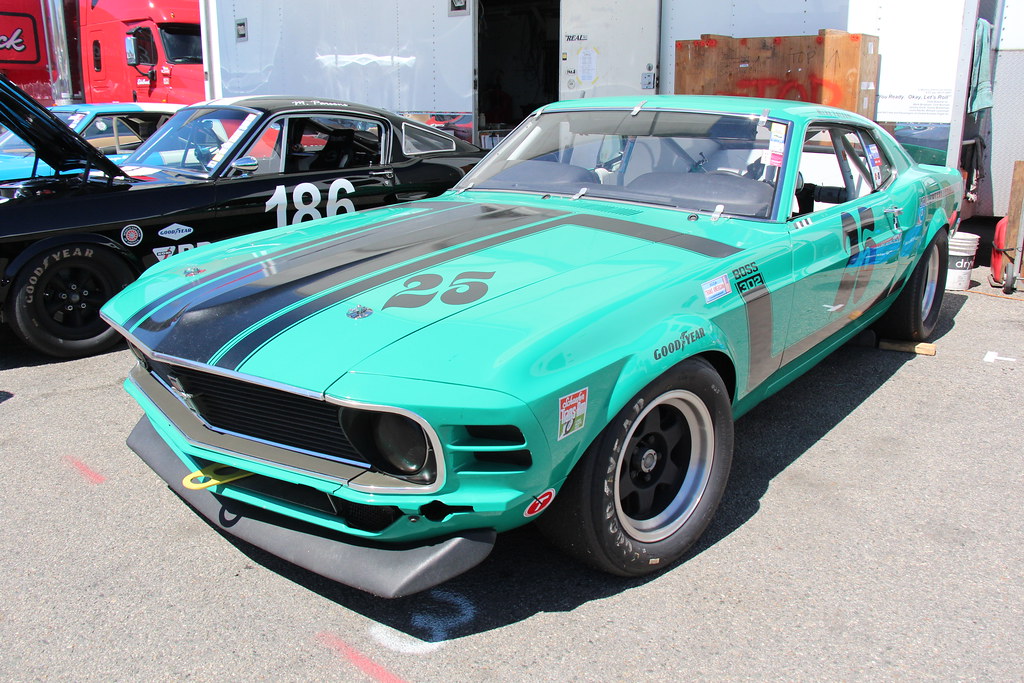
4. Ford Mustang
The Ford Mustang: an icon of American automotive spirit, a symbol of freedom, raw power, and often, spectacular public humiliation. This pony car is another staple on the list of vehicles tied to reckless drivers, often for reasons rooted in pure, unadulterated showboating. Mustang owners, particularly those at car meets or gatherings, are notorious for losing control during attempts at crowd-pleasing stunts, burnouts, or ill-advised accelerations that defy the laws of physics and common sense.
The internet is absolutely awash with viral videos documenting Mustangs, fresh off a powerful rev, spinning out into crowds or colliding with inanimate objects, much to the schadenfreude (and genuine concern) of onlookers. These unfortunate (and often dangerous) incidents have done little to help the stereotype, cementing the Mustang’s reputation for dangerous overconfidence, a vehicle where the driver’s ego frequently outweighs their skill and judgment. It’s the kind of car that just begs to be pushed, and sometimes, the pushback is a concrete barrier, or worse, an unsuspecting bystander.
While it’s crucial to acknowledge that countless Mustang owners drive responsibly and with great care, the actions of a few “bad apples” have had a disproportionately significant impact on the car’s overall public image. Seeing a Mustang rev loudly next to you at a stoplight, or hearing the distinct rumble of its V8, frequently raises a red flag in the minds of other motorists, prompting a slight increase in distance, just in case. It’s a machine built for excitement, but for some, that excitement tragically ends in a YouTube compilation of avoidable destruction.
Car Model Information: 2024 Ford Mustang Mach-E GT
Name: Ford Mustang
Caption: 2024 Ford Mustang GT Convertible
Aka: Ford T5 (Germany)
Manufacturer: Ford Motor Company
Production: March 1964 – present
ModelYears: 1965–present
Class: Unbulleted list
BodyStyle: Unbulleted list
Layout: Front-engine, rear-wheel-drive layout
Categories: 1970s cars, 1980s cars, 1990s cars, 2+2 coupés, 2000s cars
Summary: The Ford Mustang is an American automobile manufactured and marketed by Ford since 1964, as Ford’s longest nameplate in continuous production. Currently in its seventh generation, it is the fifth-best selling Ford car nameplate. The namesake of the “pony car” automobile segment, the Mustang was developed as a highly styled line of sporty coupes and convertibles derived from existing model lines, initially distinguished by its pronounced “long hood, short deck” proportions.
Originally predicted to sell 100,000 vehicles yearly, the 1965 Mustang became the most successful vehicle launch since the 1927 Model A. Introduced on April 17, 1964 (16 days after the Plymouth Barracuda), over 400,000 units were sold in its first year; the one-millionth Mustang was sold within two years of its launch. In August 2018, Ford produced the 10-millionth Mustang; matching the first 1965 Mustang, the vehicle was a 2019 Wimbledon White convertible with a V8 engine.
The success of the Mustang launch led to multiple competitors from other American manufacturers, including the Chevrolet Camaro and Pontiac Firebird (1967), AMC Javelin (1968), and Dodge Challenger (1970). It also competed with the Plymouth Barracuda, which was launched around the same time. The Mustang also had an effect on designs of coupes worldwide, leading to the marketing of the Toyota Celica and Ford Capri in the United States (the latter, by Lincoln-Mercury). The Mercury Cougar was launched in 1967 as a unique-bodied higher-trim alternative to the Mustang; during the 1970s, it included more features and was marketed as a personal luxury car.
From 1965 until 2004, the Mustang shared chassis commonality with other Ford model lines, staying rear-wheel-drive throughout its production. From 1965 to 1973, the Mustang was derived from the 1960 Ford Falcon compact. From 1974 until 1978, the Mustang (denoted Mustang II) was a longer-wheelbase version of the Ford Pinto. From 1979 until 2004, the Mustang shared its Fox platform chassis with 14 other Ford vehicles (becoming the final one to use the Fox architecture). Since 2005, Ford has produced two generations of the Mustang, each using a distinct platform unique to the model line.
Through its production, multiple nameplates have been associated with the Ford Mustang series, including GT, Mach 1, Boss 302/429, Cobra (separate from Shelby Cobra), and Bullitt, along with “5.0” fender badging (denoting 4.9 L OHV or 5.0 L DOHC V8 engines).
Get more information about: Ford Mustang
Buying a high-performing used car >>>
Brand: Ford Model: Mustang
Price: $38,959 Mileage: 12,668 mi.
Read more about: Unmasking the Automotive Paradox: 15 “Classic” Cars You’d Expect to Be Priceless But Are Actually Worth Almost Nothing
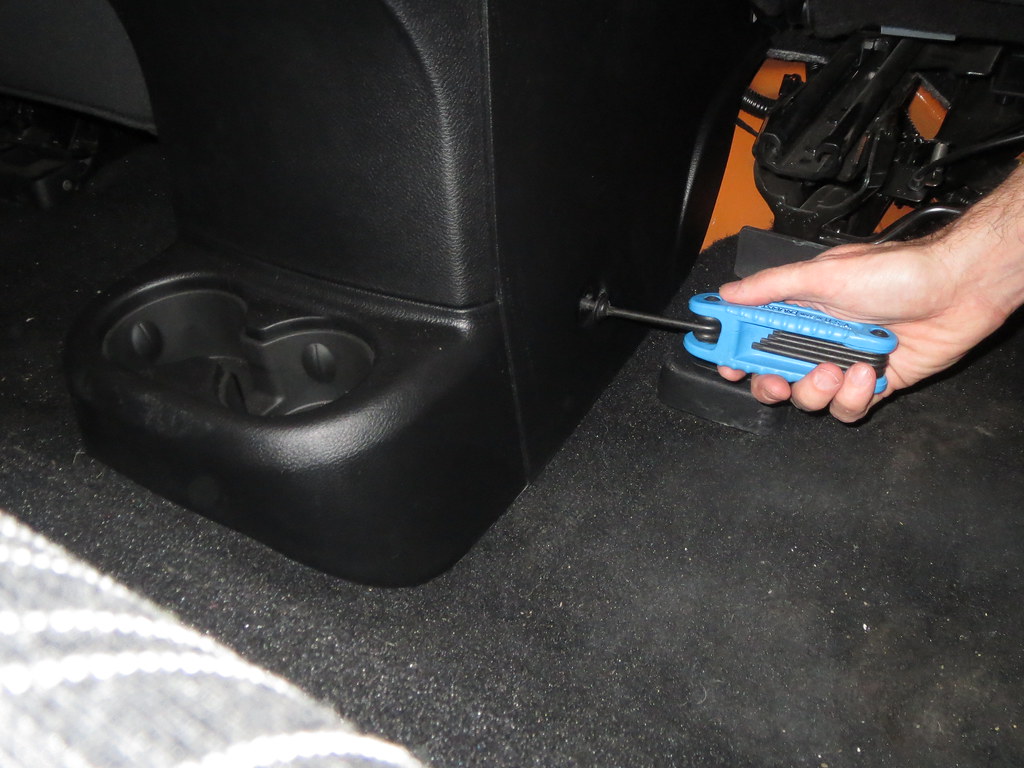
5. Jeep Wrangler
Enter the Jeep Wrangler, the rugged, go-anywhere beast that promises adventure and off-road prowess, an emblem of exploration. Yet, its drivers frequently find themselves criticized for a peculiar lack of road manners, almost as if the vehicle’s inherent ruggedness inspires some to treat public streets as extensions of their favorite off-road trails. It’s an interesting translation of capability: from tackling boulders and mud to treating asphalt like a mere suggestion, rather than a defined path.
The visual cues often tell the story: oversized tires that hum loudly, lifted suspensions that make it tower over sedans, and a general tendency towards lane drifting that adds an element of unpredictable chaos to the daily commute. While Wranglers are undeniably fun and supremely capable in their intended environment, their design characteristics – particularly their high center of gravity and sometimes less-than-precise steering – don’t always translate well to stable, predictable highway speeds, further fueling the stereotype of carefree, bordering on careless, driving habits.
Many motorists associate Wrangler drivers with a certain nonchalance, a “spirit of adventure” that perhaps shouldn’t extend to merging without looking or occupying two lanes simultaneously. It’s a vehicle that embodies freedom, but sometimes that freedom seems to include a freedom from standard traffic conventions and basic road courtesy. So, next time you spot a lifted Wrangler on the interstate, you might just find yourself giving it a little extra room, not out of respect for its off-road pedigree, but out of a healthy dose of self-preservation and a desire to avoid an unexpected encounter.
Car Model Information: 2019 Jeep Wrangler Sport S
Name: Jeep Wrangler
Caption: Jeep Wrangler Unlimited, Sahara edition
Manufacturer: Jeep
Class: Compact SUV
Production: 1986–present
Predecessor: Jeep CJ
Layout: Front-engine, rear-wheel-drive layout,rear-wheel drive
Chassis: Body-on-frame
Related: AIL Storm
Categories: 1980s cars, 1990s cars, 2000s cars, 2010s cars, All-wheel-drive vehicles
Summary: The Jeep Wrangler is a series of compact and mid-size four-wheel drive off-road SUVs manufactured by Jeep since 1986, and currently in its fourth generation. The Wrangler JL, the most recent generation, was unveiled in late 2017 and is produced at Jeep’s Toledo Complex.
The Wrangler is a direct progression from the World War II Jeep, through the CJ (Civilian Jeeps) produced by Willys, Kaiser-Jeep, and American Motors Corporation (AMC) from the mid-1940s through the 1980s. Although neither AMC nor Chrysler (after it purchased AMC in 1987) have claimed that the Wrangler was a direct descendant of the original military model — both the CJ Jeeps and the conceptually consistent Wrangler, with their solid axles and open top, have been called the Jeep model as central to Jeep’s brand identity as the rear-engine 911 is to Porsche.
Similar to the Willys MB and the CJ Jeeps before it, all Wrangler models continue to use a separate body and frame, rigid live axles both front and rear, a tapering nose design with flared fenders, a fold-flat windshield and can be driven without doors. Also, with few exceptions, they have part-time four-wheel drive systems, with the choice of high and low gearing, and standard open bodies with removable hard or soft tops. However, the Wrangler series was specifically redesigned to be safer and more comfortable on-road, to attract more daily drivers, by upgrading its suspension, drivetrain, and interior, compared to the CJ line. The suspension on all Wranglers included trackbars and anti-roll bars, and, from the 1997 TJ onwards, front and rear coil springs instead of the previous leaf springs.
From 2004 on, the Wrangler has been complemented with long-wheelbase versions, called Wrangler Unlimited. 2004-2006 models were longer versions with 2 doors. In 2004 only automatic transmission-equipped “Unlimited” versions were sold. In 2005 both an automatic and manual 6-speed (NSG-370) were offered. Since 2007, the long-wheelbase Wranglers were four-door models, offering over 20 in (508 mm) more room. By mid-2017 the four-door models represented three-quarters of all new Wranglers on the market.
Get more information about: Jeep Wrangler
Buying a high-performing used car >>>
Brand: Jeep Model: Wrangler
Price: $24,082 Mileage: 52,780 mi.
Read more about: Unmasking the Automotive Paradox: 15 “Classic” Cars You’d Expect to Be Priceless But Are Actually Worth Almost Nothing
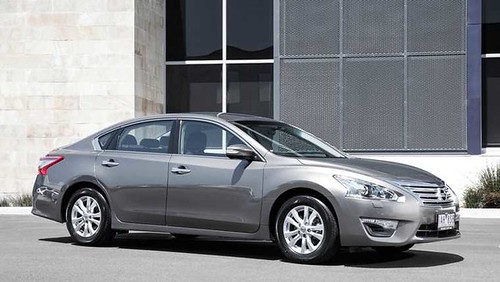
6. Nissan Altima
The Nissan Altima. This one is almost a phenomenon in itself, having developed a surprisingly pervasive and truly awful reputation among other drivers, to the point where it’s often jokingly (or not-so-jokingly) referred to as the “unofficial car of bad drivers.” It’s an ordinary, unassuming sedan, yet it’s inexplicably linked with a laundry list of road sins: speeding, tailgating, aggressive maneuvering, and a general air of automotive recklessness that seems to follow it like a shadow.
What’s the deal? Part of its infamy likely stems from its sheer ubiquity and accessibility. The Altima’s affordability and widespread availability mean it’s absolutely everywhere on the roads, increasing the probability of negative experiences and, by extension, the reinforcement of the stereotype. It’s a numbers game: more Altimas, more opportunities for an ill-mannered driver to be behind the wheel of one, leading to a self-fulfilling prophecy of sorts for its public image.
Social media, ever the amplifier of shared frustrations, has taken this stereotype and run with it, producing countless memes mocking Altima drivers, often depicting them engaging in bizarre, dangerous, or just plain clueless road behavior. Fair or not, the stereotype has clung to the Altima with the tenacity of a barnacle to a ship’s hull, making it difficult for the model to shed its notorious image. It’s a perfectly functional car, but for many, seeing one on the road triggers an immediate mental alert: “Proceed with caution, potential Altima driver ahead,” a warning often heeded.
Car Model Information: 2015 Nissan Altima 2.5 S
Name: Nissan Altima
Caption: 2024 Nissan Altima SR (L34; US)
Manufacturer: Nissan
Aka: Nissan Bluebird
Production: 1992–present
Class: Compact car
Predecessor: Nissan Bluebird,Nissan Stanza
ModelYears: 1993–present
Categories: 2000s cars, 2010s cars, 2020s cars, All-wheel-drive vehicles, All Wikipedia articles written in American English
Summary: The Nissan Altima is a mid-size car manufactured by Nissan since 1992. It is a continuation of the Nissan Bluebird line, which began in 1955.
The Altima has historically been larger, more powerful, and more luxurious than the Nissan Sentra but less so than the Nissan Maxima. The first through fourth-generation cars were manufactured exclusively in the United States and officially sold in North and South America, along with the Middle East and Australia. For other markets, Nissan sold a related mid-size sedan called the Nissan Teana which was between the Altima and Maxima in terms of size. In 2013, the Teana became a rebadged version of the fifth-generation Altima.
The name “Altima” was originally applied to a top trim line of the Nissan Leopard for the Japanese market in 1986, and then to the Nissan Laurel Altima mid-size car sold in Central America and the Caribbean before 1992. In 1992, Nissan discontinued the Stanza which was a Nissan Bluebird clone, replacing it with the US-built Altima, while remaining a compact car. The first Altima was produced in June 1992, as a 1993 model. All Altima models for the North American market were built in Smyrna, Tennessee, until June 2004, when Nissan’s Canton, Mississippi plant also began producing the model to meet high demand.
Get more information about: Nissan Altima
Buying a high-performing used car >>>
Brand: Nissan Model: Altima
Price: $8,235 Mileage: 117,517 mi.
Read more about: From Dominance to Decline: Why These 12 Iconic Car Brands Are Fading Fast in Today’s Volatile Market
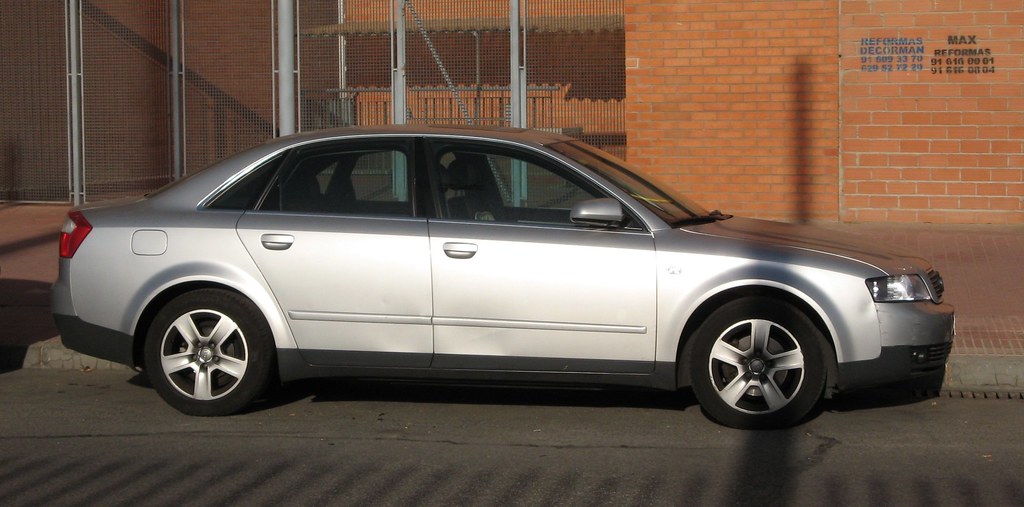
7. Audi A4
Rounding out our first section, we turn our attention to the Audi A4, a luxury compact sedan that, much like its BMW brethren, has earned a reputation for being piloted by drivers who are perpetually in a hurry, regardless of traffic conditions. It seems the “luxury” badge, for some, comes with an invisible, high-speed pass, a universal permission slip to ignore everyone else. This isn’t just about going fast; it’s about an assumed priority, a belief that their schedule, and therefore their progress, supersedes everyone else’s on the road.
The stereotype of the Audi A4 driver often includes the familiar tropes: abrupt and unannounced lane changes, a distinct aversion to using turn signals (perhaps considering them an unnecessary accessory for those who truly “know” how to drive), and a general air of impatience. While the A4 is undoubtedly a stylish, capable, and technologically advanced car, it has unfortunately become shorthand for a particular kind of impatient and self-important driving, often perceived as an extension of a certain lifestyle. It’s a premium vehicle, but the premium, for some owners, seems to extend to an entitlement on the road.
Many motorists, upon spotting an A4 darting through traffic or cutting them off, are prone to an exasperated roll of the eyes, a silent acknowledgment of the “Audi driver” cliché. It’s a testament to how deeply ingrained these perceptions become within the collective automotive consciousness. The car itself offers a refined and engaging driving experience, but it struggles to escape the shadow cast by the stereotype of the demanding, always-in-a-rush individual behind the wheel, making it another entry in the pantheon of vehicles whose drivers often define their public image, sometimes unfairly.
Beyond the Wheel: Unmasking Eight More Automotive Infamies, From Driver Stereotypes to Engineering Catastrophes and Design Fiascos
Having peeled back the layers of vehicles notorious for the human element behind their controls, we now pivot. The automotive world, it turns out, is a rich tapestry of infamy, woven not just by driver decisions but also by the sheer audacity of engineering blunders, the hubris of design missteps, and sometimes, a perfect storm of all three. These next entries dive deeper into the rabbit hole, exploring cars that have earned their ‘fiasco’ badge through a potent mix of entrenched driver stereotypes and, in many cases, fundamental flaws that made them legendary for all the wrong reasons.
Car Model Information: 2015 Audi A4 2.0T Premium
Name: Audi A4
Caption: Audi A4 (B9.5; facelift)
Manufacturer: Audi AG
Production: 1994–2025
Assembly: Germany,India,China,Indonesia,Ukraine
Class: Compact executive car
BodyStyle: Sedan (car)
Platform: Volkswagen Group B platform
Layout: Front-engine, front-wheel drive layout
Sp: uk
Predecessor: Audi 80
Successor: Audi A5#Third generation (2024)
Categories: 2000s cars, 2010s cars, 2020s cars, All-wheel-drive vehicles, All articles lacking reliable references
Summary: The Audi A4 is a line of luxury compact executive cars produced from 1994 to 2025 by the German car manufacturer Audi, a subsidiary of the Volkswagen Group. The A4 has been built in five generations and is based on the Volkswagen Group B platform. The first generation A4 succeeded the Audi 80. The automaker’s internal numbering treats the A4 as a continuation of the Audi 80 lineage, with the initial A4 designated as the B5-series, followed by the B6, B7, B8, and the B9.
The B8 and B9 versions of the A4 are built on the Volkswagen Group MLB platform shared with several models and brands across the Volkswagen Group. The Audi A4 automobile layout consists of a front-engine design, with transaxle-type transmissions mounted at the rear of the engine. The cars are front-wheel drive, or on some models, “quattro” all-wheel drive. The A4 is available as a sedan and station wagon. Historically, the second (B6) and third generations (B7) of the A4 also included a convertible version. For the B8 and B9 versions, the convertible, along with a new coupé and 5-door liftback variant, was spun-off by Audi into a new nameplate called the Audi A5.
The B9 generation A4 and A5 will be replaced by B10 version of A5, as part of Audi’s new naming convention.
Get more information about: Audi A4
Buying a high-performing used car >>>
Brand: Audi Model: A4
Price: $11,379 Mileage: 98,606 mi.
Read more about: Jurassic Park: 12 Enduring Elements That Still Electrify Audiences Today
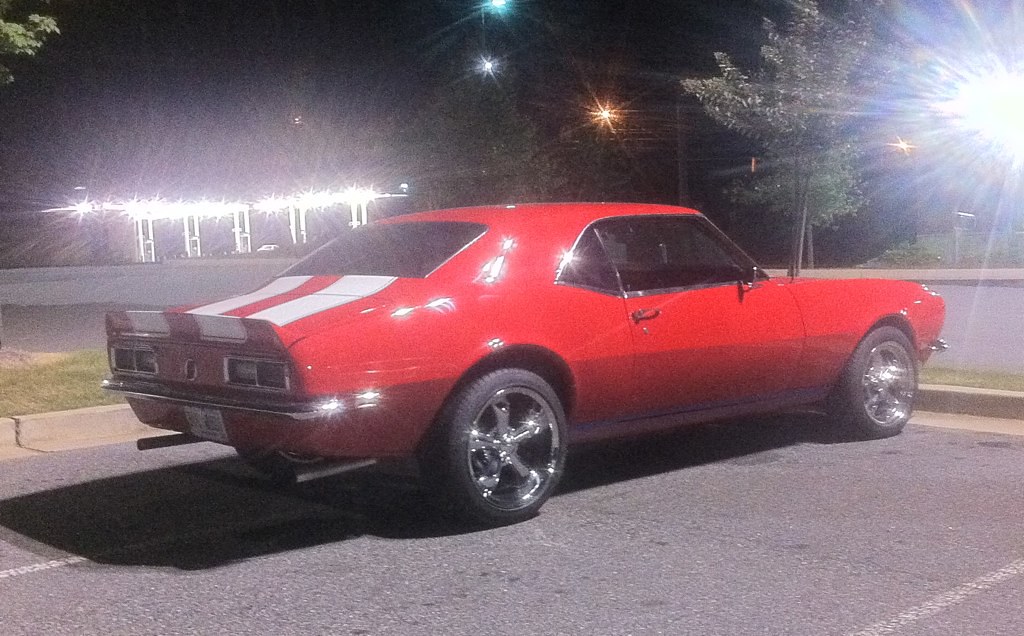
8. Chevy Camaro
The Chevy Camaro. Oh, yes, another American muscle icon that often finds itself lumped into the same rowdy category as its brethren, the Mustang and Charger. This isn’t just a car; it’s a statement, and for many, that statement translates to a ‘need for speed’ mentality, encouraging an aggressive driving style that’s as loud as its engine. You just know when a Camaro rolls up to a stoplight, there’s a good chance it’s about to turn into an impromptu drag race, whether you’re ready or not.
This powerful machine, with its undeniable presence, often becomes a magnet for drivers eager to show off. From tire-smoking burnouts to rapid accelerations, the muscle car image encourages pushing limits, sometimes far beyond what’s sensible or safe for public roads. While the majority of Camaro owners might drive with perfectly respectable manners, the antics of a few have given the entire model a stereotype that’s as hard to shake as the rumble of its V8 engine at full throttle.
It’s a car that screams performance, and sadly, for many, it also screams ‘potential hazard.’ The loud engine, while thrilling for enthusiasts, only adds fuel to this fiery image. So, next time you see a Camaro, take a moment to appreciate the engineering, but perhaps also be prepared for a driver who might just be looking for an audience, or an open stretch of tarmac to unleash some serious horsepower.
Read more about: Unmasking the Automotive Paradox: 15 “Classic” Cars You’d Expect to Be Priceless But Are Actually Worth Almost Nothing

9. Mercedes-Benz C-Class
Ah, the Mercedes-Benz C-Class. Here’s where luxury and courtesy on the road often diverge in the collective consciousness. Owning a premium badge like a Mercedes should, theoretically, come with an unspoken code of conduct, a certain decorum. Instead, for many onlookers, the C-Class driver is often accused of an unsettling blend of entitlement and outright arrogance while navigating the urban jungle or the open highway.
Think about it: who hasn’t witnessed a C-Class cutting people off with barely a blinker, or parking in a spot that clearly wasn’t designed for a vehicle, let alone one of such supposed prestige? It’s not just a car; it’s, for some, a mobile declaration of self-importance. This ‘luxury car ego’ image, much like with its BMW and Audi counterparts, clings to the C-Class, painting its drivers as inconsiderate and above the petty rules of the road.
For many motorists, the sight of a C-Class can trigger a preemptive sigh. It’s a vehicle that, despite its inherent quality and comfort, has become another unfortunate symbol of bad driving behavior. It seems that for some, the premium price tag translates into a premium on ignoring everyone else, leaving a trail of exasperated eye-rolls in its wake.
Read more about: More Than Skin Deep: 14 Great-Looking Vintage and Iconic Cars Mechanics Couldn’t Stand Fixing
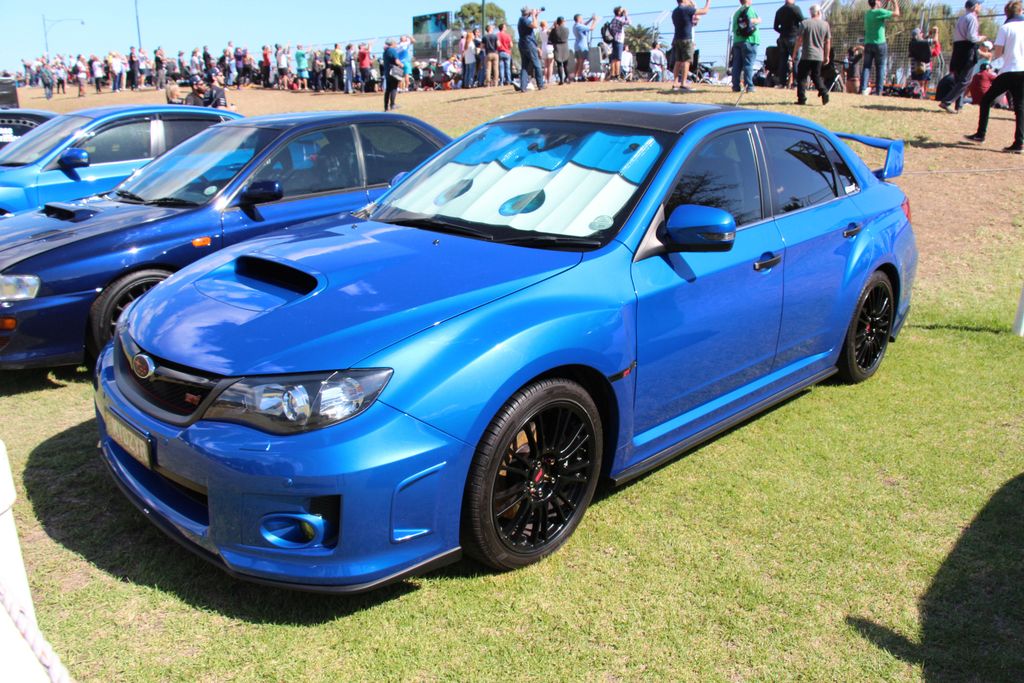
10. Subaru WRX
The Subaru WRX. This turbocharged beast holds a special place in the hearts of car enthusiasts, thanks to its rally heritage and all-wheel-drive prowess. It’s a car designed for excitement, a machine that begs to be driven with spirit. However, this very spirit often gets translated into a rather notorious reckless driver stereotype, especially among younger, more eager drivers who are keen to explore its limits.
Picture this: a WRX zipping past, engine buzzing, taking corners with an aggressive lean. This isn’t always the case, but the perception is strong. Its turbocharged engine and robust performance seem to attract a subset of owners eager to push the envelope, leading to associations with speeding and aggressive cornering. It’s a car that inspires confidence, perhaps a little too much confidence, in some of its pilots.
While it’s crucial to remember that a dedicated cult following often means highly responsible and skilled drivers, enough WRX owners have engaged in spirited (read: borderline reckless) antics to cement this reputation. When a WRX blazes past, onlookers often assume it’s being driven by someone testing its limits, adding it to the list of vehicles whose drivers often define its public image. It’s a car that commands attention, for better or for worse.
Now, let’s hit the brakes on driver stereotypes for a moment and shift gears into the truly catastrophic. Because while the human element behind the wheel can certainly cause a fiasco, sometimes, the vehicle itself is a rolling disaster, earning its infamous reputation not for the driver, but for its fundamental engineering, design, or outright dangerous flaws. Prepare yourselves; this next list is a real hall of shame for cars that were, well, just plain bad.
Car Model Information: 2022 Subaru WRX Limited
Name: Subaru WRX
Caption: 2022 Subaru WRX GT
Aka: Subaru Impreza WRX (1992–2014)
Production: 1992–2014 (Impreza-based models),2015–present (standalone models)
Assembly: Ōta, Gunma
Layout: Front-engine, four-wheel-drive layout
Manufacturer: Subaru
Related: Subaru Levorg,Subaru WRX STI
Class: Sport compact
BodyStyle: Sedan (automobile)
Categories: 2020s cars, All-wheel-drive vehicles, All articles with unsourced statements, Articles with short description, Articles with unsourced statements from August 2020
Summary: The Subaru WRX is an all-wheel drive sport compact car manufactured by the Japanese automaker Subaru, originally based on the Impreza created for the World Rally Championship in 1992. Subaru claimed the name WRX stands for “World Rally eXperimental”. Starting with the 2015 models, the WRX lineup has been split from the Impreza, with a different body style that is not offered as an optional hatchback/wagon, being introduced as the separate Levorg model.
Get more information about: Subaru WRX
Buying a high-performing used car >>>
Brand: Subaru Model: WRX
Price: $27,741 Mileage: 35,004 mi.
Read more about: The Ultimate Guide to 2024’s Most Dependable Cars: Why These Top Picks Are Driving Off Dealership Lots
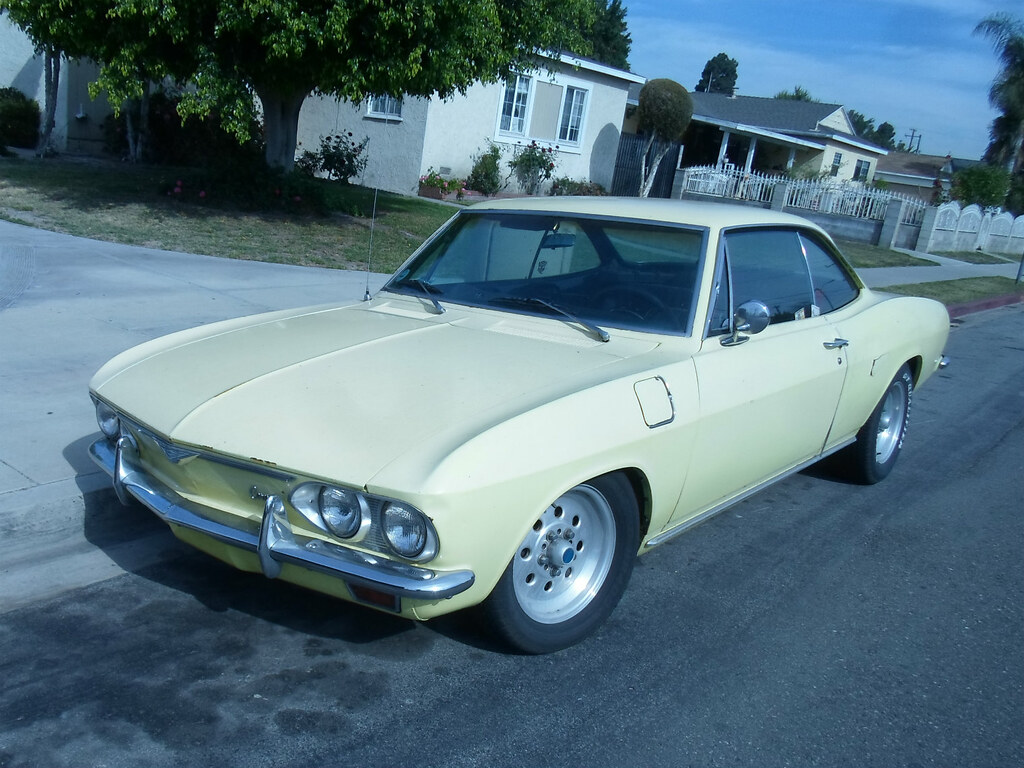
11. Chevrolet Corvair
The Chevrolet Corvair, in its early iteration, rolled onto the scene looking like something out of a futuristic dream with its sleek lines and rear-engine layout. But beneath that avant-garde exterior lurked a nightmare of a handling disaster. Its swing-axle rear suspension, a design choice that would make engineers wince today, allowed for dangerous amounts of oversteer, especially when drivers were forced into emergency maneuvers. To make matters worse, the initial models completely lacked a front anti-roll bar, which only compounded the problem, essentially turning tight turns into a dice roll.
This structural shortcoming wasn’t just a minor design flaw; it became a national scandal. Ralph Nader, in his seminal 1965 book, ‘Unsafe at Any Speed,’ famously called out the Corvair by name, cementing its fate as the poster child for automotive negligence. This damning critique wasn’t just a blip; it had a permanent cultural impact, forever branding the Corvair as chaos on wheels in the public imagination, a reputation from which it never truly recovered, despite later design improvements by General Motors.
While GM did eventually address the issues, first with a more conventional rear suspension in ’64 and then a fully independent setup in the ’65 redesign, the damage was already done. It’s a fascinating paradox: a car that, despite its inherent danger, still has a passionate following today. Seeing a Corvair club is a testament to the resilience (or perhaps sheer recklessness) of those who not only survived but thrived driving this machine for decades. Personally, I’ve always had a soft spot for its design, despite its infamous past.
Car Model Information: 1964 Chevrolet Corvair Monza
Caption: 1964 Chevrolet Corvair Monza
Name: Chevrolet Corvair
Manufacturer: Chevrolet
Production: 1960–1969
Platform: GM Z platform
Chassis: Unibody
ModelYears: 1960–1969
Assembly: United States,Kansas City, Missouri,Oakland, California,Van Nuys,St. Louis,Flint, Michigan,Belgium,Canada,Mexico,South Africa,Switzerland,Venezuela
Class: Compact car
Successor: Chevrolet Vega
Layout: Rear-engine, rear-wheel-drive layout
Categories: All Wikipedia articles written in American English, All articles lacking in-text citations, All articles needing additional references, All articles with dead external links, All articles with specifically marked weasel-worded phrases
Summary: The Chevrolet Corvair is a rear-engined, air-cooled compact car manufactured and marketed by Chevrolet over two generations between 1960 and 1969. The Corvair was a response to the increasing popularity of small, fuel-efficient automobiles, particularly the imported Volkswagen Beetle and American-built compacts like the Rambler American and Studebaker Lark.
The first generation (1960–1964) was offered as a four-door sedan, two-door coupe, convertible, and four-door station wagon. A two- and four-door hardtop and a convertible were available second-generation (1965–1969) variants. The Corvair platform was also offered as a subseries known as the Corvair 95 (1961–1965), which consisted of a passenger van, commercial van, and pickup truck variant. Total production was approximately 1.8 million vehicles from 1960 until 1969.
The name “Corvair” was first applied in 1954 to a Corvette-based concept with a hardtop fastback-styled roof, part of the Motorama traveling exhibition. When applied to the production models, the “air” part referenced the engine’s cooling system.
A prominent aspect of the Corvair’s legacy derives from controversy surrounding the handling of early models equipped with rear swing axles, articulated aggressively by Ralph Nader’s Unsafe at Any Speed but tempered by a 1972 Texas A&M University safety commission report for the National Highway Traffic Safety Administration (NHTSA) which found that the 1960–1963 Corvair possessed no greater potential for loss of control in extreme situations than contemporary compacts.
To better counter popular inexpensive subcompact competitors, notably the Beetle and Japanese imports such as the Datsun 510, GM replaced the Corvair with the more conventional Chevrolet Vega in 1970.
Get more information about: Chevrolet Corvair
Buying a high-performing used car >>>
Brand: Chevrolet Model: Corvair
Price: $29,988 Mileage: 74,787 mi.
Read more about: More Than Skin Deep: 14 Great-Looking Vintage and Iconic Cars Mechanics Couldn’t Stand Fixing
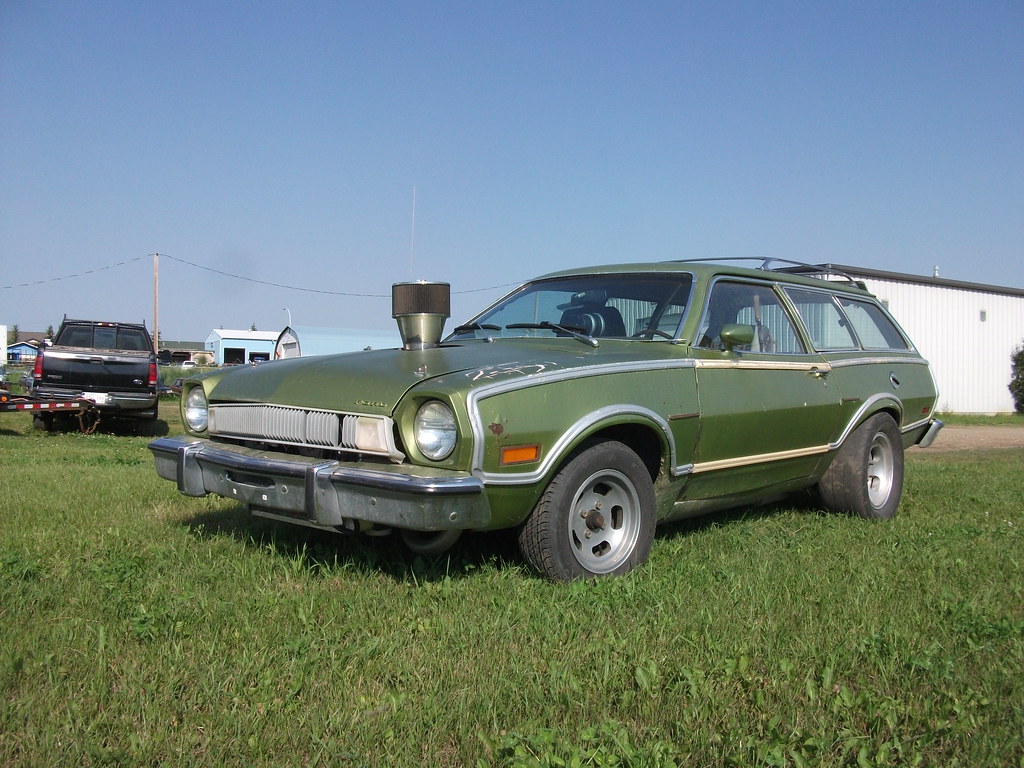
12. Ford Pinto
The Ford Pinto, oh, the Pinto. This humble subcompact, intended to be Ford’s affordable answer to Japanese imports, somehow transformed into a literal fiery symbol of corporate negligence. Its infamy stems from a design flaw so egregious it sounds like something out of a horror film: the fuel tank was inexplicably placed behind the rear axle, leaving it terrifyingly vulnerable in rear-end collisions. If the impact involved those differential bolts, the tank could rupture and ignite faster than a cheap lighter, turning a minor fender bender into a conflagration.
This wasn’t just a theoretical problem; it led to multiple deaths and horrific burn injuries, triggering a cascade of lawsuits. What truly sealed the Pinto’s fate in the automotive hall of shame was the revelation of an internal memo during litigation. This document chillingly indicated that Ford had crunched the numbers and decided it would be financially cheaper to pay out wrongful death lawsuits than to redesign and fix the fuel tank issue. Yes, human lives were literally less expensive than a recall, a concept that rightly infuriated a nation.
Mother Jones magazine blew the lid off this scandal in 1977, unleashing a media firestorm that burned hotter than the Pintos themselves. While Ford eventually added some half-hearted “improvements” like a plastic shield (because plastic is renowned for its fireproofing qualities, right?), the car’s reputation was irrevocably tarnished. To this day, the phrase ‘Pinto fire’ is automotive shorthand for any hazardous engineering shortcut, making one wonder if local funeral homes secretly sponsored the original design team.
Legal battles, both criminal and civil, further amplified the Pinto’s notoriety. Despite Ford’s acquittal on criminal charges (the car technically met standards at the time of testing, imagine that), the company paid out millions in punitive damages. The National Highway Transportation Safety Administration linked 25 deaths and 22 injuries directly to Pinto explosions. It became a colossal embarrassment for Ford, widely regarded as a ‘death trap,’ and a vehicle whose reputation, deservedly, never recovered.
Car Model Information: 1978 Ford Pinto RUNABOUT HATCHBACK
Name: Ford Pinto
Caption: Ford Pinto
Manufacturer: Ford Motor Company
Aka: Mercury Bobcat
Production: September 1970 – July 1980
ModelYears: 1971–1980 (Pinto),1974–1980 (Bobcat)
Assembly: Edison, New Jersey,Milpitas, California
Designer: Robert Eidschun (1968)
Class: Subcompact car
BodyStyle: Sedan (automobile),sedan delivery,station wagon,hatchback
Related: #Mercury Bobcat (1974–1980),Ford Mustang (second generation)
Layout: Front-engine, rear-wheel-drive layout
Chassis: Unibody
Engine: unbulleted list
Abbr: on
Disp: Ford Cologne engine
Transmission: unbulleted list
Wheelbase: 94.0 in
Length: 163 in
Width: 69.4 in
Height: 50 in
Weight: convert
Predecessor: Ford Cortina#Mark II (1966–1970)
Successor: Ford Escort (North America)
Categories: 1980s cars, Articles with short description, Cars discontinued in 1980, Cars introduced in 1970, Commons category link from Wikidata
Summary: The Ford Pinto is a subcompact car that was manufactured and marketed by Ford Motor Company in North America from 1970 until 1980. The Pinto was the first subcompact vehicle produced by Ford in North America.
The Pinto was marketed in three body styles throughout its production: a two-door fastback sedan with a trunk, a three-door hatchback, and a two-door station wagon. Mercury offered rebadged versions of the Pinto as the Mercury Bobcat from 1975 until 1980 (1974–1980 in Canada). Over three million Pintos were produced over its ten-year production run, outproducing the combined totals of its domestic rivals, the Chevrolet Vega and the AMC Gremlin. The Pinto and Mercury Bobcat were produced at Edison Assembly in Edison, New Jersey, St. Thomas Assembly in Southwold, Ontario, and San Jose Assembly in Milpitas, California.
Since the 1970s, the safety reputation of the Pinto has generated controversy. Its fuel-tank design attracted both media and government scrutiny after several deadly fires occurred when the tanks ruptured in rear-end collisions. A subsequent analysis of the overall safety of the Pinto suggested it was comparable to other 1970s subcompact cars. The safety issues surrounding the Pinto and the subsequent response by Ford have been cited widely as business ethics and tort reform case studies.
Get more information about: Ford Pinto
Buying a high-performing used car >>>
Brand: Ford Model: Pinto
Price: $18,995 Mileage: 88,217 mi.
Read more about: More Than Skin Deep: 14 Great-Looking Vintage and Iconic Cars Mechanics Couldn’t Stand Fixing
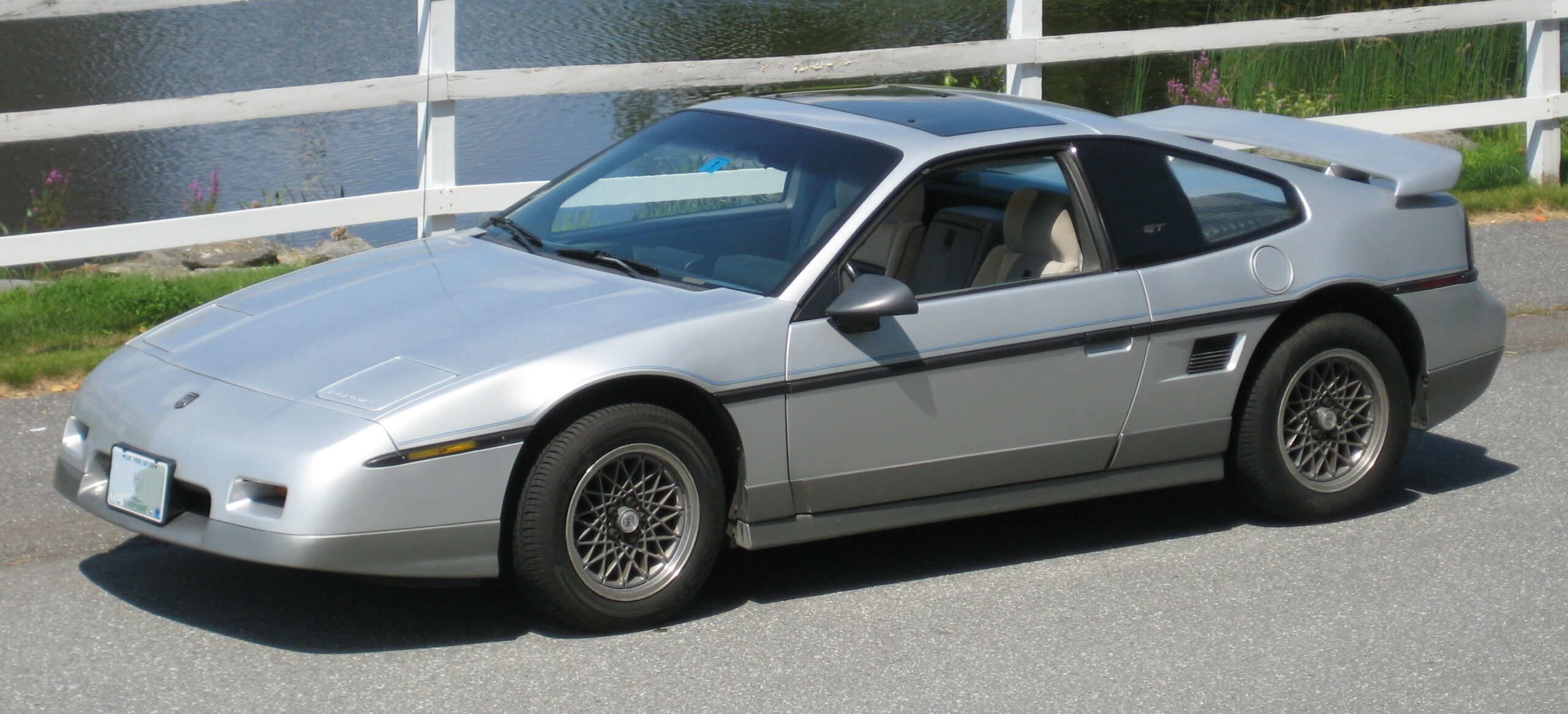
13. Pontiac Fiero
When Pontiac introduced the Fiero, it was pitched as a sporty, mid-engine coupe on a budget, an exotic for the everyman. What it often became, however, was an impromptu roadside bonfire. We prefer the term “mid-engine death trap,” which, let’s be honest, would make for an absolutely killer band name. The Fiero’s design was, quite literally, on fire, as owners soon discovered they were dealing with actual flames licking out from under the engine cover. This wasn’t just a quirk; it was a serious, recurring problem.
The primary culprit behind these fiery spectacles? Oil leaks from the infamous 2.5L “Iron Duke” engine. These leaks would drip onto hot engine parts, igniting with alarming regularity. As if that wasn’t enough, later investigations unearthed an even more terrifying flaw: faulty connecting rods could punch clean through the engine blocks, spraying oil directly onto the exhaust manifold. Nothing says ‘performance’ quite like an engine bay BBQ, right? It was a recipe for disaster, and the Fiero served it up hot.
By 1987, nearly 250 fires had been reported, prompting GM to issue a massive recall—a recall that probably required more fire extinguishers than wrenches in the repair shops. While later models benefited from improved suspension, more reliable V6 engines, and genuine performance upgrades, the Fiero’s early years had already written its story in charred metal. Despite its raw potential to be a fun and affordable exotic, many drivers today only remember the Fiero for its association with fire trucks and burned-out shells. It’s a sad legacy for a car that, when properly sorted (often via engine swaps to something like an LS or K-Series, because anything is better than the “Iron Duke of Death”), can actually be a blast.
Car Model Information: 1986 Pontiac Fiero SPORT GT
Name: Pontiac Fiero
Caption: 1988 Fiero Formula
Manufacturer: Pontiac (automobile)
Production: August 1983 – August 16, 1988,370,168 produced
ModelYears: 1984 – 1988
Successor: Pontiac Solstice
Assembly: Pontiac, Michigan
Designer: Hulki Aldikacti,George Milidrag
Class: Sports car
BodyStyle: fastback,notchback
Platform: GM P platform
Layout: Rear mid-engine, rear-wheel-drive layout
Engine: {{cvt,151,CID,L,1,disp=flip,Iron Duke engine#LR8,Inline-four engine
Transmission: Turbo-Hydramatic 125,Manual transmission,Getrag 282 transmission,Isuzu
Wheelbase: 2373 mm
Abbr: on
Length: 4072 mm
Width: 1750 mm
Height: 1191 mm
Weight: 1116 to
Categories: All articles with unsourced statements, Articles with short description, Articles with unsourced statements from February 2012, Articles with unsourced statements from July 2024, Articles with unsourced statements from September 2011
Summary: The Pontiac Fiero is a rear mid-engine, light sports car manufactured and marketed by Pontiac for model years 1984 – 1988. Intended as an economical commuter car with modest performance aspirations, it was Pontiac’s first two-seater since their 1926 to 1938 coupes, and the first mass-produced, rear mid-engine car by any American manufacturer.
In addition to using 4- and 6-cylinder engines to help Pontiac meet America’s ‘CAFE’ average fuel economy requirements, the Fiero’s chassis and structure technology used non-load-bearing, composite body-panels, contributing to the car’s light-weight and its unique selling proposition. Pontiac engineers modified the design over its life to enhance its performance and reposition the two-seater closer to the implications of its sporty configuration.
The Fiero 2M4 (two-seat, mid-engine, four-cylinder) placed on Car and Driver magazine’s Ten Best list for 1984, and was the Official Pace Car of the Indianapolis 500 for 1984.
A total of 370,168 Fieros were manufactured over five years’ production, its mild performance, reliability and safety issues becoming points of criticism. The Fiero was discontinued after annual sales fell steadily.
Get more information about: Pontiac Fiero
Buying a high-performing used car >>>
Brand: Pontiac Model: Fiero
Price: $11,990 Mileage: 98,558 mi.
Read more about: Unearthing the Unexpected: 10 Forgotten 1980s GM Muscle Cars That Command Attention Today

14. Jeep CJ-5
The Jeep CJ-5. It looked like the very embodiment of freedom, doors off, tires eager for dirt, the ultimate symbol of off-road adventure. Yet, this iconic vehicle also carved out a dangerous reputation for rollovers, a stark contrast to its image of unbridled exploration. Its incredibly short 81-inch wheelbase, combined with a high center of gravity, made it notoriously twitchy on paved roads, giving drivers the feeling of being a squirrel on an espresso binge. Insurance companies were quick to flag the CJ-5 for having one of the highest rollover rates of any passenger vehicle during the 1970s, which is not exactly a statistic you want associated with your daily driver.
While the CJ-5 was never truly intended to be a highway cruiser—it was, after all, derived from a military vehicle—many unsuspecting buyers used it for exactly that purpose, often with predictably catastrophic results. The vehicle’s legendary charm and capability off-road simply didn’t translate to suburban safety, leading to a long-lasting and grim reputation. A 1981 report from the NHTSA further highlighted its serious stability issues, specifically citing its narrow track and short wheelbase as critical factors in its propensity to tip over.
That reputation stuck with the CJ-5 long after production ended. If you happened to spot one of these on the highway back in the day, you weren’t just admiring its ruggedness; you were probably giving it an extra wide berth, not out of respect for its off-road pedigree, but out of a healthy dose of self-preservation. It was a vehicle that promised adventure, but sometimes delivered a harrowing dose of reality instead.
Car Model Information: 1974 Jeep CJ-5 Base
Name: Jeep CJ
Caption: Jeep CJ-2A
Manufacturer: Willys-Overland,Willys Motors,Kaiser Jeep,American Motors Corporation
BodyStyle: Sport utility vehicle,convertible,pickup truck
Production: 1944–1986,More than 1.5 million
Class: sport utility vehicle
Layout: Front-engine, rear-wheel-drive layout,rear-wheel drive
Assembly: Toledo Complex,Maywood, California,Brampton Assembly (AMC),Pars Khodro,Cairo,Istanbul,São Bernardo do Campo
Successor: Jeep Wrangler,Jeep Comanche
Predecessor: Willys MB,Jeep Commando
Categories: AMC vehicles, All articles with unsourced statements, American Motors, Articles with short description, Articles with unsourced statements from April 2025
Summary: The Jeep CJ models are a series and a range of small, open-bodied off-road vehicles and compact pickup trucks, built and sold by several successive incarnations of the Jeep automobile marque from 1945 through 1986. The 1945 Willys “Universal Jeep” was the world’s first mass-produced civilian four-wheel drive car.
In 1944, Willys-Overland, the primary manufacturer of the World War II military Jeep, built the first prototypes for a commercial version – the CJ, short for “civilian Jeep”. The design was a direct evolution from the wartime Jeep, but the most obvious change was adding a tailgate, and relocating the spare wheel to the side. Also, besides adding basic civilian amenities and options and legally-compliant lighting, the CJ required a sturdier drivetrain than the wartime model, because the targeted rural buyers would expect years of durability, instead of mere weeks as during WWII.
From then on, all CJ Jeeps consistently had a separate body and frame, rigid live axles with leaf springs both front and rear, a tapering nose design with flared fenders, and a fold-flat windshield, and could be driven without doors. Also, with few exceptions, they had part-time four-wheel drive systems, with the choice of high and low gearing, and open bodies with removable hard or soft tops. A few stand-out changes during 42 model years were the introductions of round-fendered vs. flat-fendered bodies (1955 CJ-5), straight-6 and V8-engines, automatic gearboxes, and different 4-wheel drive systems. The 1976 CJ-7 stretched the wheelbase by 10 inches (25 cm), and made doors and a removable hardtop common items.
After remaining in production through a range of model numbers, and several corporate parents, the Jeep CJ line was officially ended after 1986. More than 1.5 million CJ Jeeps were built, having continued the same basic body style for 45 years since the Jeep first appeared. Widely regarded as “America’s workhorse”, the CJs have been described as “probably the most successful utility vehicle ever made.” American Motors VP Joseph E. Cappy said the end of “CJ production will signal an end of a very important era in Jeep history.” In 1987, the Jeep CJ-7 was replaced by the first-generation Jeep Wrangler. Looking very similar and riding on the same wheelbase as the CJ-7, it carried over some important components, including its use of leaf springs.
The similar model the DJ “Dispatcher” was introduced in 1956 as a two-wheel drive version with open, fabric, or a closed steel body in both left- and right-hand drives for hotel, resort, police, and later United States Postal Service markets.
Get more information about: Jeep CJ
Buying a high-performing used car >>>
Brand: Jeep Model: CJ-5
Price: $15,999 Mileage: 19,384 mi.
Read more about: Unlocking Long-Term Value: The Top 10 SUVs That Hold Their Worth After Five Years, According to Expert Analysis
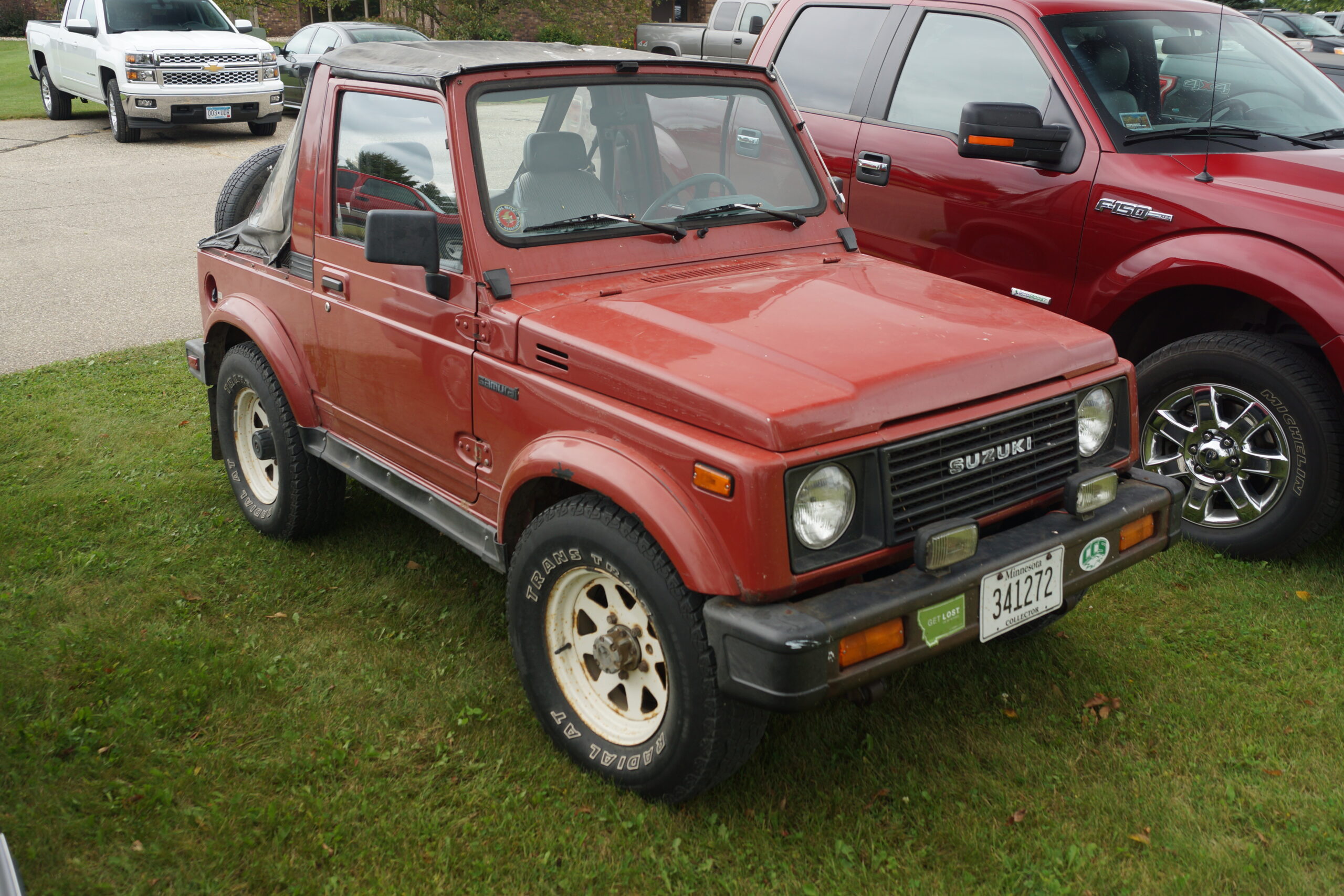
15. Suzuki Samurai
The Suzuki Samurai arrived on the scene as an adorable, cheap, and cheerful off-roader, a tiny mountain goat designed for the masses. It was nimble, tough, and could tackle trails that bigger rigs feared. However, its small stature and utilitarian design inadvertently led to a rollover risk that became the stuff of legend, forever staining its reputation. The defining moment arrived in 1988 when a Consumer Reports piece dramatically labeled it “Unacceptable,” claiming it easily tipped over during routine avoidance maneuvers. That single story hit the press like a meteor, and even though Suzuki vehemently fought back in court (eventually settling, and issuing a rather sad “fact sheet” to owners), sales plummeted faster than a lead balloon in a bathtub.
In fairness to the Samurai, its lightweight construction, narrow track, and stiff suspension did indeed make it prone to tipping—but only if you drove it like, say, a Honda Civic Type R on a twisty canyon road. Which, let’s be honest, some drivers absolutely did, confusing its off-road agility with on-road sports car prowess. Off-road enthusiasts adored its unpretentious toughness and go-anywhere spirit, but parents and cautious commuters were rightfully terrified by the screaming headlines and the grim warnings.
The damage inflicted by that Consumer Reports article lingered for years, turning a perfectly capable and beloved off-roader into a public punching bag for safety advocates. Suzuki’s U.S. image for passenger cars never truly recovered from this blow, proving that sometimes, a single bad review can be far more devastating than a factory recall, especially when it taps into primal fears of safety.
Car Model Information: 1987 Suzuki Samurai
Name: Suzuki Jimny
Caption: 2019 Suzuki Jimny SZ5
Manufacturer: Suzuki
Production: April 1970 – present (2.85 million units sold by September 2018)
Class: Off-road vehicle,mini SUV
BodyStyle: SUV,van,convertible,pickup truck
Layout: Front-engine, rear-wheel-drive layout,Front-engine, four-wheel-drive layout
Chassis: Body-on-frame
Related: Maruti Gypsy
Categories: 1980s cars, 1990s cars, 2000s cars, 2010s cars, All articles with minor POV problems
Summary: The Suzuki Jimny (Japanese: スズキ・ジムニー, Suzuki Jimunī) is a series of four-wheel drive off-road mini SUVs, manufactured and marketed by Japanese automaker Suzuki since 1970.
Originally belonging to the kei class, Japan’s light automobile tax/legal class, the company continues to market a kei-compliant version for the Japanese and global markets as the Jimny, as well as versions that exceed kei-class limitations. Suzuki has marketed 2.85 million Jimnys in 194 countries through September 2018.
Get more information about: Suzuki Jimny
Buying a high-performing used car >>>
Brand: Suzuki Model: Samurai
Price: $24,000 Mileage: 21,797 mi.
Read more about: Navigating the Golden Age: A Retiree’s Guide to Investing in and Enjoying Classic Cars for Both Passion and Profit
In the grand automotive circus, some acts are legendary for their daring drivers, others for their jaw-dropping design flaws, and a select few for simply being a spectacular mess from the ground up. Whether it’s the human element pushing limits and ignoring basic road etiquette, or a catastrophic engineering oversight that makes you question the very concept of quality control, these vehicles have earned their spots in the annals of automotive infamy. They’ve burned, crumpled, and tipped, often becoming shorthand for everything that can go wrong on four wheels. It’s a wild ride, this car culture, full of machines that stir passion and frustration in equal measure. So, the next time you spot one of these notorious rides, remember, there’s often more than just metal, rubber, and a driver at play—there’s a whole history of reputation, earned the hard way.



